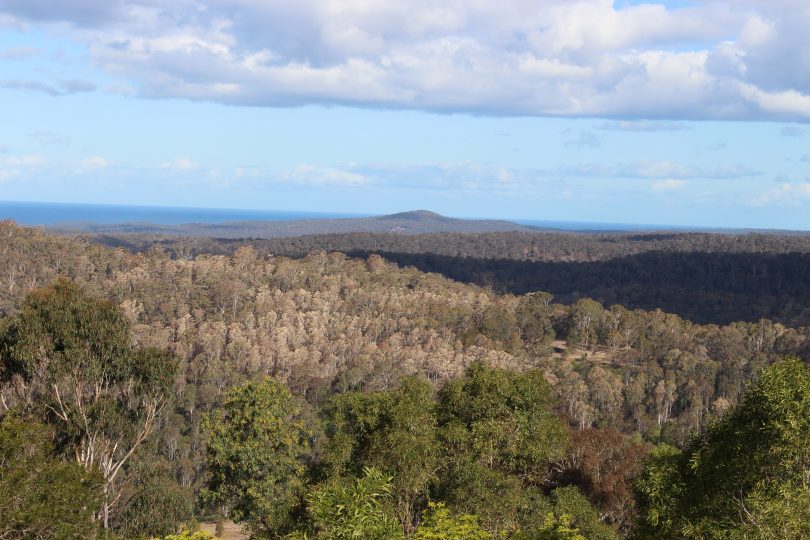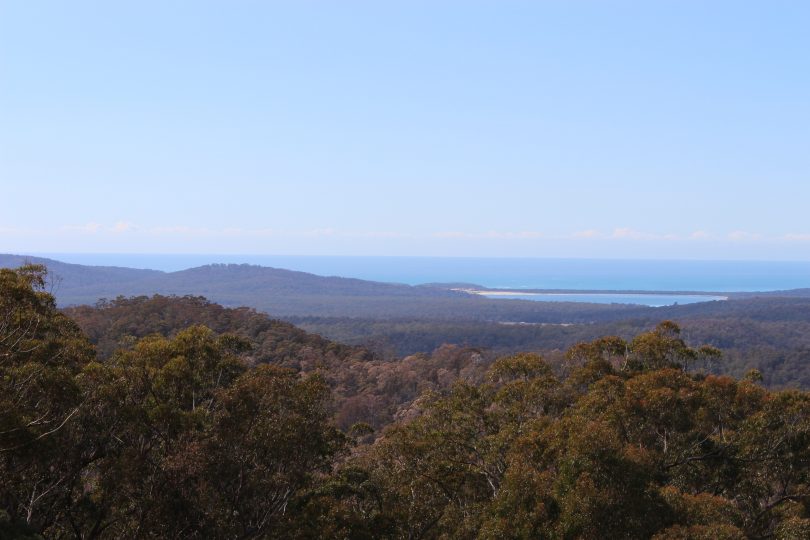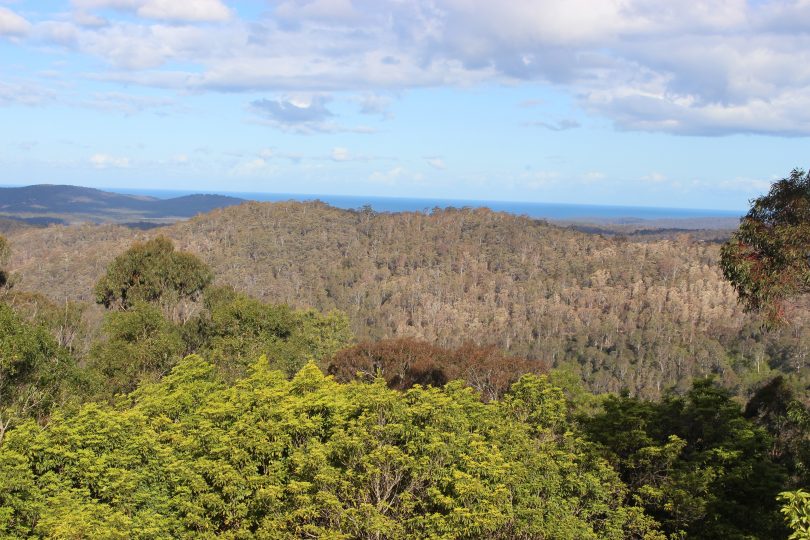
Reports point to the western side of Mumbulla and Doctor George Mountains, to the west of Moruya, and here at Black Range south of Bega, Photo: Ian Campbell.
Trees are turning brown in the green forested landscape of the Bega Valley and Eurobodalla as dry times push the environment to its limits.
Big patches of what appears to be dead and dying bush are a talking point and visible from the Princess Highway north and south of Bega and west of Moruya.
“It’s the drought, it happened back on 02/03 and 97/98 as well – this happens when it gets extremely dry,” says Brogo based ecologist Jackie Miles.
“Trees are overstocked in some areas for the moisture available. So anywhere where the soil is particularly shallow and the trees can’t get their roots down, and west-facing and north-facing slopes where you get the hot afternoon sun is where it’s happening.”
Reports point to the western side of Mumbulla and Doctor George Mountains, along Black Range south of Bega, and to the west of Moruya.
“And it would be happening in Bemboka section of South East Forests National Park if it wasn’t all burnt out last year,” Ms Miles says.
While the Australian bush is known for its powers of recovery, the future for these patches of brown isn’t clear.
“They can recover but it depends on how frequently this is going to happen – there is only so much resilience in the system,” Ms Miles says.
“If droughts like this get too frequent and are too long than the bush is going to start to thin out.”

The bush in survival mode at Black Range, looking towards Wallagoot Lake. Photo: Ian Campbell.
Superintendent John Cullen from Far South Coast Rural Fire Service says the phenomena is a concern headed into summer.
“The patches we are seeing would certainly burn harder during a fire and its the leaf drop that creates that ground fuel,” Mr Cullen says.
“And trees already under that degree of pressure would find it harder to survive a fire – particularly the thinner bark trees.”
To get the landscape and ground moisture back in more positive territory “we need six to eight inches (20 cm) of rain,” Mr Cullen says.
“And then follow up, its been so long since we’ve had a good fall of rain. Right now its survival of the fittest.”
Mr Cullen says east-facing and south-facing bushland that normally carries higher moisture levels are also doing it tough, “and that’s where fire can do a lot of damage because a lot of that vegetation never gets burnt.”
Ms Miles says a more managed approach to our forests would help them.
“Aboriginal people used to burn them, so they didn’t get too thick,” she says.
“It seems to me in a lot of areas the bush is just getting too thick, there are too many individual trees competing for what moister there is.
“If things were a bit more open it might not be so hard for the trees.”
The drink our landscape needs seems a while off. The latest seasonal outlook from the Bureau of Meteorology (BOM) says “rainfall is likely to be below average across most of the country, for the remainder of October and November. The dry outlook for southern and northeastern Australia continues into December.”
“The latest value of the Indian Ocean Dipole (+1.94 °C) was the strongest weekly value since at least 2001, and is forecast to remain strongly positive until at least the end of spring,” the BOM says.
“Typically, this means below-average rainfall for much of central and southern Australia during spring, and warmer than average temperatures for the southern two-thirds of Australia.
“Australian climate patterns are being influenced by the long-term increasing trend in global air and ocean temperatures.”
There is a hope influences like the Indian Ocean Dipole will start to break down during the summer months, increasing the chances of rain. Fingers crossed.

Black Range, south of Bega. To get the landscape and ground moisture back in more positive territory “we need six to eight inches (20 cm) of rain,” Mr Cullen says. Photo: Ian Campbell.



